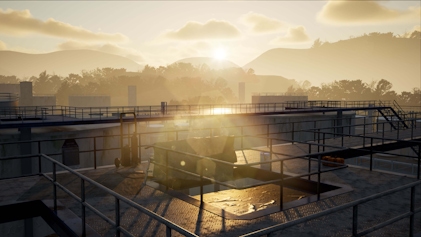3. Realistic scenarios where making mistakes is safe and encouraged
Encouraging making mistakes? That is bold! But don’t we often hear we learn best through making mistakes?
One
of the significant advantages of VR training is that it can simulate
scenarios that would be impractical, dangerous or costly to replicate in
real life. Yet, we need to have workers ready to tackle work in often
hazardous settings and feel confident to perform and take calculated
risks, and even stop work when things become unsafe. Understanding the
tasks, how to perform them but also recognising when it is unsafe to
proceed are critical in reducing small incidents as much as bigger
accidents. Beyond creating a culture where employees feel safe to report
an incident or to take those calculated risks, they also need to see
those risks once in the real world.
In a recent case study
conducted with Shell, one of Pixaera’s clients, their HSSE manager
(Americas) Steven Wrobleski noted “We are not going to put people in
harm's way in order to train but in the virtual world, you can do that,
right? And that's really part of the power.”
And it is powerful because
it allows people to learn from their mistakes whilst keeping safe and
prepared to cope and perform the work once they are sent out to do it.
4. The importance of a great feedback loop and adaptive safety training solution
Another benefit of virtual reality training is
whilst it provides an immersive experience for employees, it is also a
safe environment with a great feedback loop. Right along the training
journey, the software collects critical data fully individualized to
each worker and their personal experience within the simulation.
And this data is powerful because:
- You can establish the areas each employee is struggling
with and tailor the training / revisit the teaching to focus on those
areas in which they are lacking.
- You can recognise overall trends across multiple sessions
and employees and see some of the red flags and areas organizations need
to focus on; where they should invest and coach further.
The example of “STOP WORK”, which is available across the
different modules of the training software, can really highlight a
critical trend within the workplace: is it an isolated issue with an
individual not able to recognise when a situation is unsafe or could it
be indicative of a wider trend such as the lack of a psychological
safety culture within the organization; Is there a need to concentrate
on training workers to better recognise potential risks or should the
focus be on empowering staff to voice their concerns or report incidents
without fear, even if unjustified of bad consequences?
This is why such data and analytics are invaluable to an
organization and will enable to foster a strong safety culture but also
help create more tailored safety training solutions within their safety
management plans; whether it be to concentrate on training teams as a
whole or focus efforts where it’s most needed, on a case-to-case basis.
5. The scalability of VR training software is second to none
VR safety training is highly scalable, making it
an integral part of any company's safety training management plan. This
approach is flexible for both the employer and employee.
In theory, employees can access VR training at their own
pace, on their own schedule, and get instant feedback and assessment at
every stage of their training.
When new trends or protocols are implemented, the company's
safety training programs can also grow and adapt quickly and easily
without compromising quality or the ability to meet the training needs
of the employees.
When the company itself grows in scope and personnel,
training can be started quickly, spread across easily and updated
promptly.
6. Found to be cost effective
Implementing a VR safety training doesn’t mean
letting go of traditional training methods, but rather blending the
curricula so they complement each other, both in style and topics.
Traditional training methods alone can be expensive and
time-consuming; equipment, trainers, and facility costs add up quickly.
Even the updating of the curriculum can prove to be a challenge.
In fact, as that same PWC study
found: it only takes 375 learners to achieve parity of cost with
in-class training and subsequent learners make it more cost effective to
implement a VR training solution. And that’s in best case scenarios.
One of the advantages of VR training is that platforms and
modules are often already designed and may only require small tweaks
before deployment, reducing the time it takes to put it into place. It
also often comes with on-going customer and technical support, regular
updates that can be quickly implemented, detailed analytics; which all
make for an efficient, time-saving, and adaptable training approach and
it will save money in the long run.
Companies can then train employees remotely, allowing for flexible scheduling and fewer training-related travel expenses.
But beyond that, it is the cost of safety
and what “could-be” that we need to consider. Though not easily
quantifiable on paper, It is still evident that investing into the best
training methods for your employees is largely more cost-saving than
dealing with the financial and human consequences of occupational deaths
or work-related injuries.





